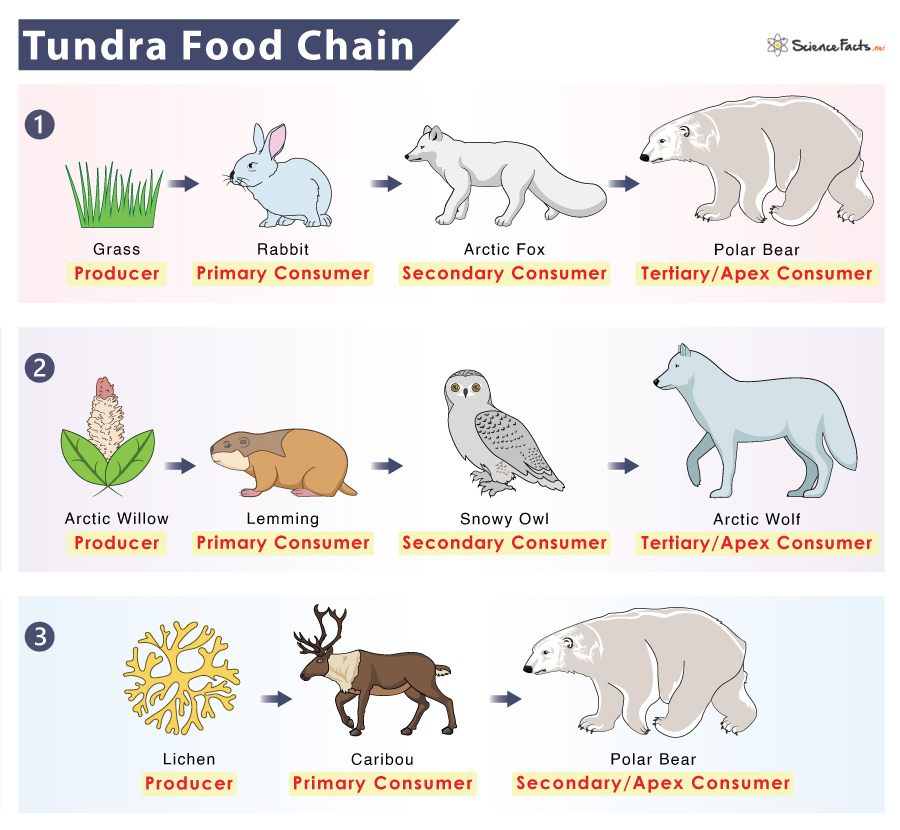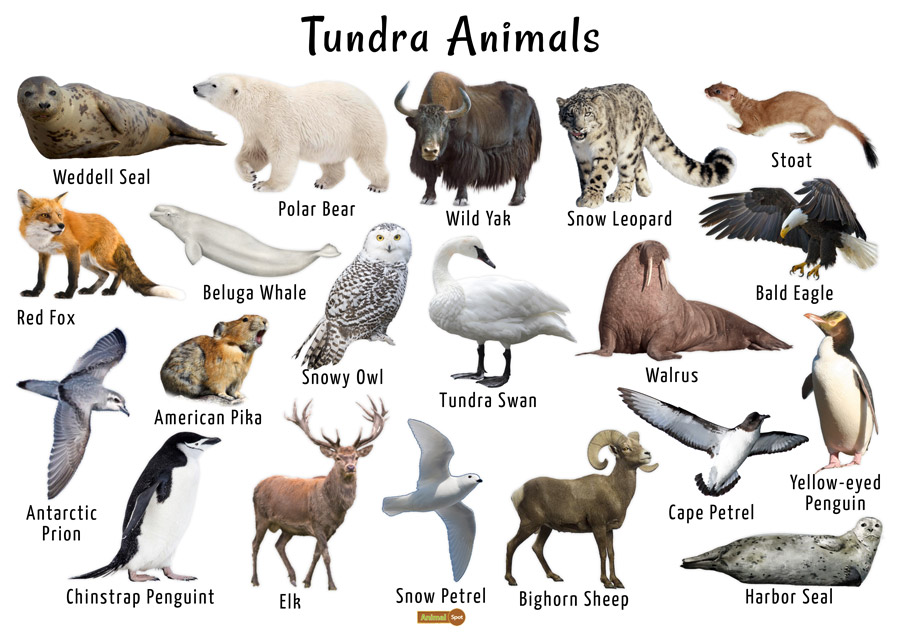Topic food web of the ocean ecosystem: Dive into the heart of the ocean"s labyrinth, where the food web of the ocean ecosystem reveals a complex, interwoven tapestry of life, sustaining the marine world"s remarkable biodiversity and balance.
Table of Content
- What is the structure of the food web in the ocean ecosystem?
- The Fundamental Basis: Phytoplankton and Algae
- Primary Consumers: Zooplankton, Small Fish, and Crustaceans
- Secondary Consumers: Larger Fish and Marine Mammals
- Top Predators: Sharks, Whales, and Human Impact
- Decomposers: Bacteria and Their Role in the Ecosystem
- Unique Features: Deep Sea Vents and Their Specialized Food Webs
- YOUTUBE: Exploring Ecosystems: Coastal Food Webs - California Academy of Sciences
- Threats to Oceanic Food Webs: Pollution, Overfishing, and Climate Change
- Conservation Efforts: Sustainable Fishing and Marine Protected Areas
What is the structure of the food web in the ocean ecosystem?
The structure of the food web in the ocean ecosystem can be described as follows:
- Primary producers: Bacteria, phytoplankton, and algae are the primary producers in the ocean ecosystem. They form the lowest trophic level and are responsible for converting sunlight, nutrients, and carbon dioxide into organic matter through photosynthesis.
- Primary consumers: Zooplankton and small fish are considered primary consumers as they feed directly on the primary producers. They obtain energy by consuming the phytoplankton and algae.
- Secondary consumers: Larger fish and marine mammals are considered secondary consumers as they feed on the primary consumers. They obtain energy by consuming zooplankton and small fish.
- Tertiary consumers: Apex predators such as sharks, dolphins, and killer whales are tertiary consumers. They feed on the secondary consumers, obtaining energy and nutrients from their prey.
- Decomposers: Decomposers such as bacteria and fungi play a vital role in breaking down dead organisms and waste materials. They release nutrients back into the ecosystem, which can be utilized by primary producers to restart the food chain.
This hierarchical structure represents the interconnected relationships between various organisms in the ocean ecosystem, with energy and nutrients flowing through the food web.
READ MORE:
The Fundamental Basis: Phytoplankton and Algae
Phytoplankton and algae are the foundation of the ocean"s food web, playing a critical role in sustaining marine life. These tiny organisms are not just the primary producers in the oceanic ecosystem; they are the lifeblood that fuels the entire aquatic food chain.
- Photosynthesis Powerhouses: Through photosynthesis, phytoplankton and algae convert sunlight, carbon dioxide, and water into oxygen and nutrients, essentially feeding the ocean.
- Nutrient Cycling: They play a key role in nutrient cycling, absorbing minerals and carbon dioxide from the water, which are then passed through the food web to other marine organisms.
- Supporting Biodiversity: These organisms support a vast array of marine life, from zooplankton to the largest whales, by providing the essential nutrients and energy needed for survival.
- Oxygen Production: Phytoplankton contribute significantly to the world"s oxygen production, with some estimates suggesting they produce about 50% of the Earth"s oxygen.
- Carbon Sequestration: They play a crucial role in carbon sequestration, helping mitigate climate change by absorbing carbon dioxide from the atmosphere.
Understanding the vital role of phytoplankton and algae in the ocean ecosystem highlights the importance of protecting these microscopic yet mighty organisms. Their health and abundance directly impact marine biodiversity, climate regulation, and the overall health of the planet.

Primary Consumers: Zooplankton, Small Fish, and Crustaceans
At the heart of the ocean"s food web, primary consumers play a pivotal role in transforming energy from the sun, captured by phytoplankton and algae, into a form that can be utilized by higher trophic levels. These organisms are the crucial link between the producers and the rest of the ecosystem.
- Zooplankton: Tiny and often microscopic, zooplankton feed on phytoplankton. They are a diverse group, including both protozoa and small animals like krill. Zooplankton are the main food source for many marine species, including fish larvae and baleen whales.
- Small Fish: Small fish, such as sardines and anchovies, feed on zooplankton and are in turn preyed upon by larger marine animals. They are vital for transferring energy up the food chain and maintaining the balance of marine ecosystems.
- Crustaceans: This group includes shrimp, crabs, and lobsters, which feed on a variety of food sources, including phytoplankton, zooplankton, and detritus. Crustaceans are an important source of nutrition for fish, sea birds, and humans.
These primary consumers are fundamental to the ocean ecosystem, supporting the complex web of life beneath the waves. Their survival and health are indicators of the overall health of marine environments, highlighting the importance of preserving oceanic biodiversity.
Secondary Consumers: Larger Fish and Marine Mammals
Secondary consumers are the powerful players in the ocean"s food web, feeding on primary consumers and maintaining the balance within marine ecosystems. These consumers include a wide range of larger fish and marine mammals, each playing a distinct role in their habitats.
- Larger Fish: Species such as tuna, salmon, and cod fall into this category. They prey on smaller fish and zooplankton, transferring energy up the food chain and supporting the diversity of life in the ocean.
- Marine Mammals: This group includes seals, dolphins, and whales. They consume a variety of marine life, including fish, squid, and in the case of baleen whales, massive amounts of krill. Marine mammals are crucial for the health of marine ecosystems, often serving as indicators of ocean health.
These secondary consumers not only ensure the flow of energy through the food web but also contribute to the regulation of populations of primary consumers, preventing overpopulation and the depletion of primary producers. The balance maintained by secondary consumers is vital for sustaining the ocean"s biodiversity and productivity.
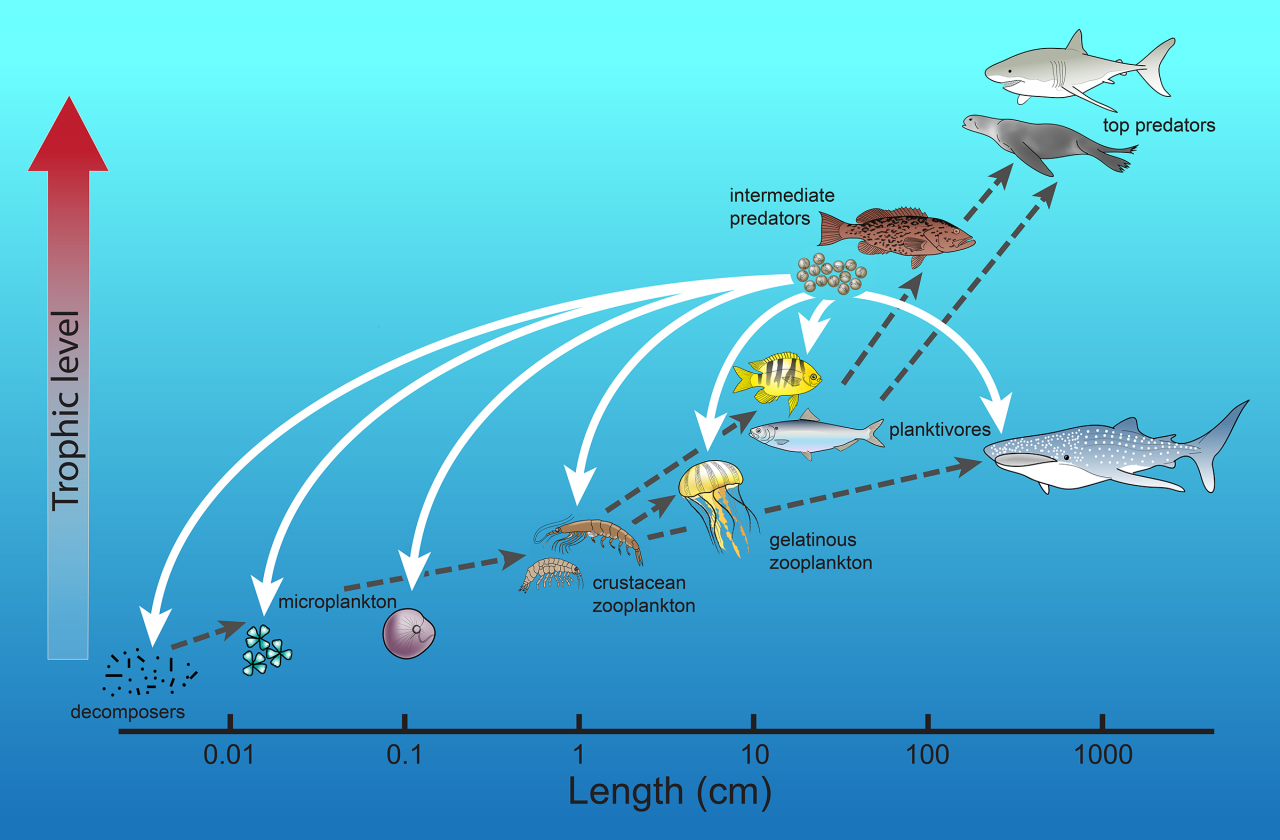
Top Predators: Sharks, Whales, and Human Impact
Top predators such as sharks and whales play a critical role in maintaining the health and balance of ocean ecosystems. Their position at the apex of the food web allows them to regulate the populations of other marine species, ensuring biodiversity and ecosystem stability.
- Sharks: As apex predators, sharks regulate the populations of a wide range of prey species, helping to prevent any single species from overwhelming the ecosystem. Their presence indicates a healthy ocean environment.
- Whales: Whales, including both toothed and baleen varieties, consume large quantities of fish, krill, and plankton. They play a significant role in nutrient cycling by redistributing nutrients through the water column.
- Human Impact: Humans affect ocean food webs through activities like fishing, pollution, and climate change. Overfishing can deplete key species, while pollution and climate change disrupt habitats and food availability.
Protecting these top predators and mitigating human impact is essential for the health of ocean ecosystems. Conservation efforts and sustainable practices are critical to preserve the intricate balance of the ocean"s food web.
Decomposers: Bacteria and Their Role in the Ecosystem
Decomposers, primarily bacteria and fungi, are the unsung heroes of the ocean ecosystem, playing a critical role in nutrient recycling. These microscopic organisms break down dead matter and waste, converting them back into basic nutrients that can be reused by primary producers, thus closing the loop of the food web.
- Nutrient Recycling: By breaking down dead organisms, decomposers release nitrogen, phosphorus, and other vital nutrients back into the environment, making them available for algae and phytoplankton.
- Detritus Feeders: Many small organisms feed on the detritus (dead plant and animal matter) broken down by bacteria, which in turn supports a variety of life forms in the ocean.
- Carbon Cycling: Decomposers are crucial for carbon cycling, converting organic materials into carbon dioxide through the process of decomposition, which is then used by primary producers in photosynthesis.
The role of decomposers is indispensable for the sustainability of the ocean"s food web, ensuring that nutrients are continually cycled through the ecosystem and supporting the growth and health of all marine life.
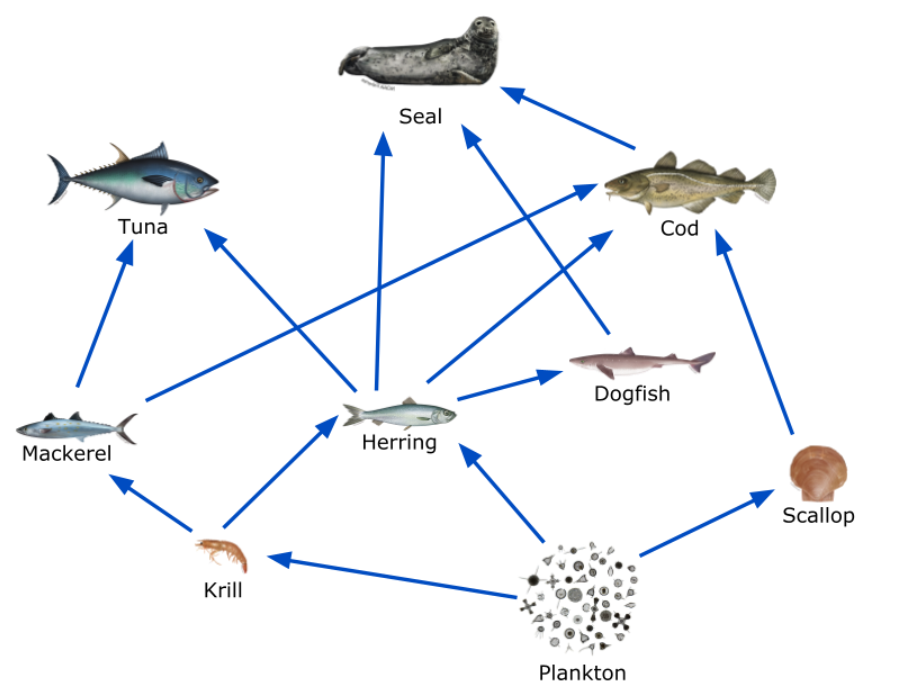
Unique Features: Deep Sea Vents and Their Specialized Food Webs
Deep sea vents are fascinating ecosystems located on the ocean floor, known for their unique food webs that operate independently of sunlight. These ecosystems rely on chemosynthesis, a process where bacteria convert chemicals from the vents into energy, forming the basis of the food web.
- Chemosynthetic Bacteria: These bacteria use hydrogen sulfide, emitted by the vents, to produce organic material through chemosynthesis, serving as the primary producers in this environment.
- Tubeworms, Clams, and Shrimp: These organisms rely on symbiotic relationships with chemosynthetic bacteria for nourishment. Tubeworms, for example, house bacteria in their tissues and derive energy from them.
- Higher Predators: Larger predators, such as certain species of fish and octopuses, feed on smaller animals living near the vents. These predators are adapted to the extreme conditions of deep sea vents.
This isolated ecosystem showcases the adaptability of life, with organisms thriving in conditions once thought to be inhospitable. The food web surrounding deep sea vents illustrates the complexity and diversity of life in the ocean"s depths, highlighting the importance of these ecosystems for biological research and understanding the limits of life on Earth.
Exploring Ecosystems: Coastal Food Webs - California Academy of Sciences
Get ready to embark on a breathtaking journey along stunning coastal landscapes! This mesmerizing video captures the beauty of coastal regions from around the world, showcasing their picturesque beaches, vibrant marine life, and magnificent cliffs. Don\'t miss out on the chance to escape to these idyllic coastal destinations and immerse yourself in the tranquility of the seaside.
Worked Example: Analyzing an Ocean Food Web - Middle School Biology - Khan Academy
Dive into the fascinating world of analyzing with this captivating video. Delve into the intricacies of data analysis, uncover patterns, and gain valuable insights. Whether you\'re a seasoned analyst or just curious about the power of analyzing, this video will equip you with the knowledge and tools to uncover hidden information and make more informed decisions. You\'ll be amazed at what you can discover through the art of analyzing.
Threats to Oceanic Food Webs: Pollution, Overfishing, and Climate Change
The stability and health of oceanic food webs are increasingly threatened by human activities. Pollution, overfishing, and climate change are among the most significant threats that disrupt the intricate balance of marine ecosystems.
- Pollution: Chemical runoff, plastics, and oil spills not only harm marine life directly but also alter the composition of phytoplankton and zooplankton populations, affecting the entire food web.
- Overfishing: Unsustainable fishing practices reduce the populations of key species, disrupting predator-prey relationships and leading to a cascade of effects throughout the food web.
- Climate Change: Rising sea temperatures and ocean acidification impact the distribution and abundance of marine species, altering food web dynamics and threatening coral reefs, which are critical habitats for diverse marine life.
Addressing these threats requires global cooperation and sustainable management practices to ensure the resilience and health of oceanic food webs, safeguarding marine biodiversity and the services it provides to humanity.

READ MORE:
Conservation Efforts: Sustainable Fishing and Marine Protected Areas
The preservation of ocean ecosystems and their complex food webs is critical for maintaining biodiversity and the global climate. Sustainable fishing practices and the establishment of Marine Protected Areas (MPAs) are two pivotal conservation strategies aimed at safeguarding marine life and habitats.
- Sustainable Fishing: This approach involves regulating fishing methods, catch limits, and seasons to ensure that marine populations remain viable. Sustainable fishing practices help prevent overfishing, reduce bycatch (unintended catch of non-target species), and allow ecosystems to recover.
- Marine Protected Areas: MPAs are regions of the ocean where human activities are more strictly regulated than the surrounding waters to conserve biodiversity and protect critical habitats. These areas are essential for preserving nursery grounds, helping to ensure the survival of marine species and the stability of food webs.
Both strategies are essential for the long-term health of marine ecosystems. They not only help protect marine species and habitats but also support the livelihoods of communities dependent on marine resources. Effective implementation of sustainable fishing practices and the expansion of MPAs are crucial steps towards a resilient and thriving ocean.
Exploring the ocean"s food web reveals a fascinating world of interdependence and resilience, highlighting the importance of conservation efforts to preserve our planet"s life-supporting marine ecosystems for future generations.
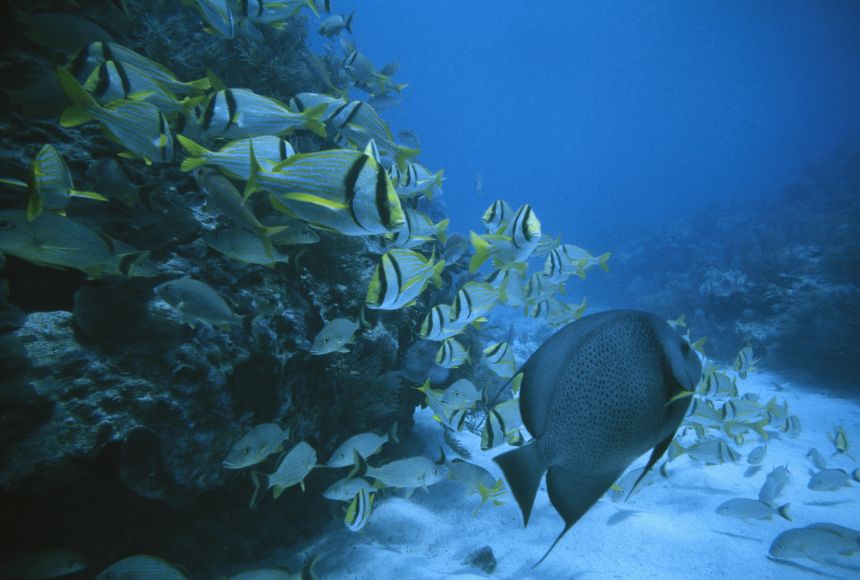
:max_bytes(150000):strip_icc()/489034241_5-56af62885f9b58b7d0183204.jpg)


:max_bytes(150000):strip_icc()/497408077-56af61ff3df78cf772c3c309.jpg)





:max_bytes(150000):strip_icc()/tundra-58bf1be55f9b58af5cc29755.jpg)
:max_bytes(150000):strip_icc()/GettyImages-901482062-6470b1099c6a47a881f9a22d7bca0d0a.jpg)
